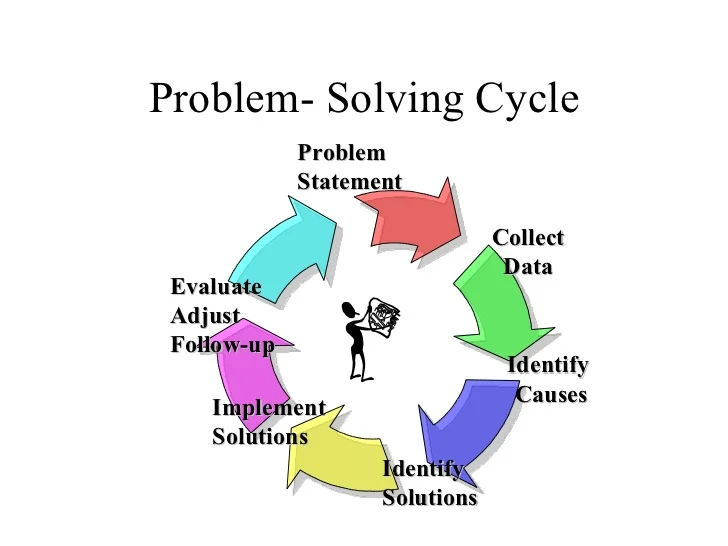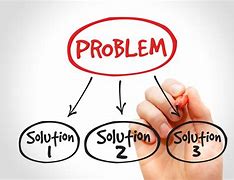Introduction
Solving problems is an essential skill in both personal and professional life. Whether you’re facing a technical issue, a personal challenge, or a business-related obstacle, having a structured approach can make a significant difference. In this guide, we’ll walk you through the best strategies, tools, and techniques to effectively solve problems and avoid common pitfalls. Let’s dive in!

Understanding the Root Cause
Before jumping into solutions, it’s crucial to identify the root cause of the problem. Many issues arise from deeper, underlying factors that may not be immediately obvious. Here’s how to analyze and understand the core of any problem:
- Ask “Why?” Five Times – A technique used to uncover the deeper reason behind an issue.
- Identify Patterns – Look for recurring themes or triggers.
- Gather Data & Evidence – Use facts, not assumptions, to diagnose the problem.
- Consider External Factors – Sometimes, outside influences contribute to the issue.
Understanding the real cause helps you apply the right solution, rather than just addressing symptoms.

Step-by-Step Guide to Solving the Problem
Once you understand the root cause, follow these structured steps to solve the problem effectively:
1. Define the Problem Clearly
- Write down exactly what the issue is.
- Be specific about when, where, and how it occurs.
2. Gather Relevant Information
- Research similar problems and solutions.
- Seek input from experts or experienced individuals.
3. Brainstorm Possible Solutions
- List all potential ways to fix the issue.
- Consider both short-term and long-term solutions.
4. Evaluate and Choose the Best Solution
- Compare the pros and cons of each option.
- Prioritize solutions based on effectiveness and feasibility.
5. Develop an Action Plan
- Break down the solution into clear, actionable steps.
- Assign tasks and set deadlines if necessary.
6. Implement the Solution
- Take action according to the plan.
- Monitor progress and make adjustments if needed.
7. Review and Improve
- Analyze the results—did the solution work?
- Identify lessons learned for future problem-solving.
By following this structured approach, you can tackle challenges efficiently and prevent them from recurring.

Tools & Resources You Can Use
Using the right tools and resources can streamline problem-solving and improve efficiency. Here are some helpful options:
1. Analytical Tools
- Fishbone Diagram (Ishikawa Diagram) – Helps identify root causes.
- 5 Whys Analysis – A simple method to dig deeper into the problem.
- SWOT Analysis – Evaluates strengths, weaknesses, opportunities, and threats.
2. Productivity & Planning Tools
- Trello, Asana, or Notion – Organize tasks and track progress.
- Mind Meister – Create mind maps for brainstorming solutions.
- Google Docs & Spreadsheets – Collaborate and document findings.
3. Research & Learning Platforms
- Google Scholar & ResearchGate – Find academic insights.
- YouTube & Online Courses (Udemy, Coursera) – Learn expert solutions.
- Forums (Reddit, Quora, Stack Exchange) – Get real-world advice from experienced people.
4. AI & Automation Tools
- ChatGPT & AI Assistants – Get instant guidance and solution suggestions.
- Zapier & IFTTT – Automate repetitive tasks and streamline processes.
5. Professional Help & Networks
- Consultants & Coaches – Hire experts for specialized problems.
- Networking Groups & Communities – Connect with professionals who have faced similar challenges.
Leveraging these tools and resources can save time, improve decision-making, and help you find the best possible solutions efficiently.
Common Mistakes to Avoid
When solving problems, certain mistakes can slow progress or even make the issue worse. Here are key pitfalls to watch out for:
1. Jumping to Conclusions
- Avoid assuming the cause of the problem without proper analysis.
- Always gather data and consider multiple possibilities before acting.
2. Ignoring the Root Cause
- Fixing only the symptoms can lead to recurring issues.
- Use techniques like the 5 Whys or Fishbone Diagram to dig deeper.
3. Overcomplicating the Solution
- Simple solutions are often the most effective.
- Avoid unnecessary steps that add complexity without real benefits.
4. Not Seeking Help or Feedback
- Sometimes, an outside perspective can provide valuable insights.
- Ask for advice from experts, colleagues, or online communities.
5. Lack of a Clear Action Plan
- Without a structured approach, implementation can be messy.
- Define clear steps, set deadlines, and assign responsibilities if needed.
6. Ignoring Lessons from Past Mistakes
- Learning from past failures helps prevent repeated errors.
- Keep track of what worked (and what didn’t) for future reference.
7. Giving Up Too Soon
- Some problems take time and multiple attempts to resolve.
- Stay persistent and adapt your approach if the first solution doesn’t work.
By avoiding these common mistakes, you’ll improve your problem-solving skills and achieve better results more efficiently.

Expert Tips & Best Practices
Solving problems effectively requires strategic thinking and proven techniques. Here are some expert tips to help you tackle challenges efficiently:
1. Stay Calm and Objective
- Avoid making decisions based on emotions.
- Take a step back, analyze the situation, and respond logically.
2. Define the Problem Clearly
- Be specific about what the issue is and what outcome you want.
- A well-defined problem is halfway to being solved.
3. Use the “80/20 Rule”
- Focus on the 20% of efforts that will produce 80% of results.
- Prioritize high-impact solutions instead of wasting time on minor issues.
4. Break Problems into Smaller Parts
- Complex problems can feel overwhelming.
- Divide them into smaller, manageable tasks to tackle them step by step.
5. Think Critically & Challenge Assumptions
- Ask “What if?” or “Is there another way?” to find innovative solutions.
- Don’t assume previous methods are the best—explore alternative approaches.
6. Leverage Data & Evidence
- Base decisions on facts, not guesses.
- Use research, case studies, or analytics to guide your choices.
7. Seek Advice from Experts & Communities
- Consult professionals in the field for guidance.
- Join online forums, mastermind groups, or industry communities to learn from others’ experiences.
8. Stay Adaptable & Open to Change
- If one solution doesn’t work, pivot and try another.
- Problem-solving is an iterative process—stay flexible.
By applying these expert-backed strategies, you’ll develop strong problem-solving skills and handle challenges more effectively.

Case Studies & Success Stories
Real-life examples can provide valuable insights into how effective problem-solving strategies work in practice. Here are a few inspiring case studies and success stories to motivate and guide you:
1. Case Study: Turning Around a Failing Business
- Problem: A small business was struggling with declining sales and high overhead costs.
- Solution: The owners identified inefficient processes and a lack of customer engagement. They implemented a streamlined inventory system and launched a targeted marketing campaign.
- Result: Within six months, the business reduced costs by 20%, increased sales by 30%, and regained customer loyalty.
2. Success Story: Solving a Software Bug
- Problem: A tech company faced a critical bug in their product that was affecting thousands of users.
- Solution: The development team used root cause analysis and pinpointed a coding error that was causing the issue. After testing multiple fixes, they released a patch and communicated directly with affected users.
- Result: The bug was resolved within 48 hours, and the company received positive feedback for its swift response. Customer satisfaction rose by 40%.
3. Case Study: Solving a Personal Health Challenge
- Problem: An individual struggled with chronic back pain, affecting their quality of life.
- Solution: After researching different treatments, they adopted a combination of physical therapy, ergonomic adjustments at work, and daily stretching exercises.
- Result: Within three months, they significantly reduced their pain levels and returned to a more active lifestyle.
4. Success Story: Overcoming Team Communication Issues
- Problem: A team at a marketing agency faced poor communication, resulting in missed deadlines and frustration among team members.
- Solution: The manager introduced regular check-in meetings, adopted project management software, and encouraged transparent communication.
- Result: The team improved efficiency met deadlines consistently and developed a more collaborative work culture.
5. Case Study: Improving a Product’s Customer Experience
- Problem: A consumer product company received negative feedback about the usability of its app.
- Solution: The company conducted user testing and interviews, identified key pain points, and redesigned the interface with a more intuitive layout.
- Result: After the update, app usage increased by 50%, and customer satisfaction ratings soared.
These case studies demonstrate how different approaches to problem-solving can lead to tangible, positive outcomes. Whether you’re working on business challenges, personal growth, or technical issues, the key is to analyze the situation, find the root cause, and apply the right solution.
Alternative Solutions
Sometimes, there’s more than one way to solve a problem. Exploring alternative solutions can lead to better outcomes or help you find a more efficient approach. Here are several alternatives to consider when solving problems:
1. Outsourcing vs. In-House Solutions
- Outsourcing: Hiring external experts or companies to solve specific problems. This can save time and bring specialized skills, especially for complex issues.
- In-House Solutions: Solving problems within your team or organization, allowing you to maintain control and build internal expertise.
- When to Choose: Outsourcing is ideal for tasks that require specialized knowledge or when you need fast results. In-house solutions are best when long-term solutions and internal skill-building are priorities.
2. Traditional Methods vs. Innovative Technologies
- Traditional Methods: Using conventional techniques like manual labor, face-to-face communication, or hands-on approaches.
- Innovative Technologies: Leveraging automation tools, artificial intelligence, or advanced software to solve problems more efficiently.
- When to Choose: Traditional methods work well when you need a personal touch or are dealing with low-tech challenges. Technology is great for scaling, automating tasks, or solving problems faster with precision.
3. Short-Term Fix vs. Long-Term Solution
- Short-Term Fix: Addressing the immediate symptoms of a problem without fully resolving the underlying issue.
- Long-Term Solution: Taking a comprehensive approach to ensure the problem doesn’t reoccur.
- When to Choose: A short-term fix might be necessary in emergencies, while long-term solutions are crucial for sustained success and preventing recurring issues.
4. Direct Action vs. Indirect Action
- Direct Action: Tackling the problem head-on with a focused, straightforward approach.
- Indirect Action: Solving the problem by addressing related factors or making smaller changes that eventually lead to a solution.
- When to Choose: Direct action is ideal for problems that can be resolved quickly, while indirect action is useful for complex issues that require gradual changes or systemic shifts.
5. Single Solution vs. Combination of Solutions
- Single Solution: Choosing one approach to fix the problem, often the most straightforward or cost-effective option.
- Combination of Solutions: Using multiple strategies simultaneously to address various aspects of the problem.
- When to Choose: A single solution might work for simpler problems, while combining solutions is beneficial for multifaceted issues requiring diverse strategies.
6. DIY Approach vs. Professional Help
- DIY Approach: Solving the problem on your own by applying available resources, learning new skills, or experimenting with solutions.
- Professional Help: Bringing in experts to guide you through the process or handle the problem for you.
- When to Choose: Opt for DIY when you have the time, knowledge, and resources. Professional help is better when the problem is complex or urgent.
By exploring these alternative solutions, you can tailor your approach to the specific problem and your available resources. Sometimes the best solution is a mix of different strategies, so don’t hesitate to get creative and think outside the box!

FAQs (Frequently Asked Questions)
Here are some common questions people have when trying to solve problems, along with helpful answers:
1. How do I identify the root cause of a problem?
- Start by asking “Why?” multiple times (the 5 Whys technique) to dig deeper into the issue. You can also use tools like a Fishbone Diagram to visually map out possible causes. Gathering data and feedback from different sources is also key to pinpointing the root cause.
2. What if my solution doesn’t work?
- Don’t be discouraged! Problem-solving often requires trial and error. Reassess the situation, identify why the first solution failed, and try an alternative approach. Be open to adjusting your plan and learning from the experience.
3. How can I ensure my team is involved in solving the problem?
- Open communication is essential. Encourage brainstorming sessions, seek input from team members, and assign roles based on expertise. Using collaborative tools like Trello or Slack can help keep everyone on the same page.
4. Is it better to solve problems alone or as a team?
- It depends on the problem. Complex or multi-faceted problems benefit from diverse perspectives, so working as a team can be highly effective. However, some issues can be solved quicker individually, especially if you have expertise in the area.
5. How do I know if I’m choosing the right solution?
- Evaluate the potential solutions based on criteria like feasibility, impact, cost, and time. It helps to test solutions on a small scale before fully committing. Additionally, consulting with experts or colleagues can offer valuable insights.
6. Can problem-solving be learned, or is it a natural skill?
- Problem-solving is a skill that can definitely be developed! With practice, tools, and techniques, anyone can improve their ability to identify, analyze, and solve problems more effectively.
7. How do I stay motivated when solving difficult problems?
- Break the problem into smaller, more manageable parts to avoid feeling overwhelmed. Celebrate small victories along the way and remind yourself of the ultimate goal. Persistence and staying focused on the solution will keep you moving forward.
8. How can I prevent problems from happening in the future?
- Once the problem is solved, analyze the process and learn from it. Implement preventive measures, refine systems, and create strategies to address similar issues before they arise. Regularly reviewing and improving processes can help avoid recurring problems.
9. Is it possible to solve every problem?
- While not every problem has a perfect solution, most problems can be mitigated or managed. The key is persistence, flexibility, and the ability to adapt strategies when needed.
10. How can I measure the success of my solution?
- Establish clear metrics or key performance indicators (KPIs) to track progress. This could include financial metrics, customer feedback, productivity improvements, or other measurable outcomes. Regularly monitor and evaluate the results to determine if the solution is effective.
These FAQs should help clear up some common concerns and provide additional guidance as you work through your problem-solving journey.
Conclusion & Final Thoughts
Solving problems is an essential skill that can significantly improve your personal and professional life. By following a structured approach—understanding the root cause, leveraging the right tools, and avoiding common mistakes—you can tackle any challenge that comes your way.
Remember, there’s rarely a one-size-fits-all solution. The key is to stay flexible, consider alternative solutions, and be persistent. Whether you’re solving a business challenge, a personal issue, or a technical problem, the ability to analyze, adapt, and execute will always lead to better outcomes.
Take the time to evaluate different strategies, learn from past experiences, and refine your problem-solving process. With patience and the right mindset, you’ll be well-equipped to handle anything that comes your way.
Don’t forget: Every problem solved is an opportunity for growth. Keep learning, keep improving, and keep solving!

